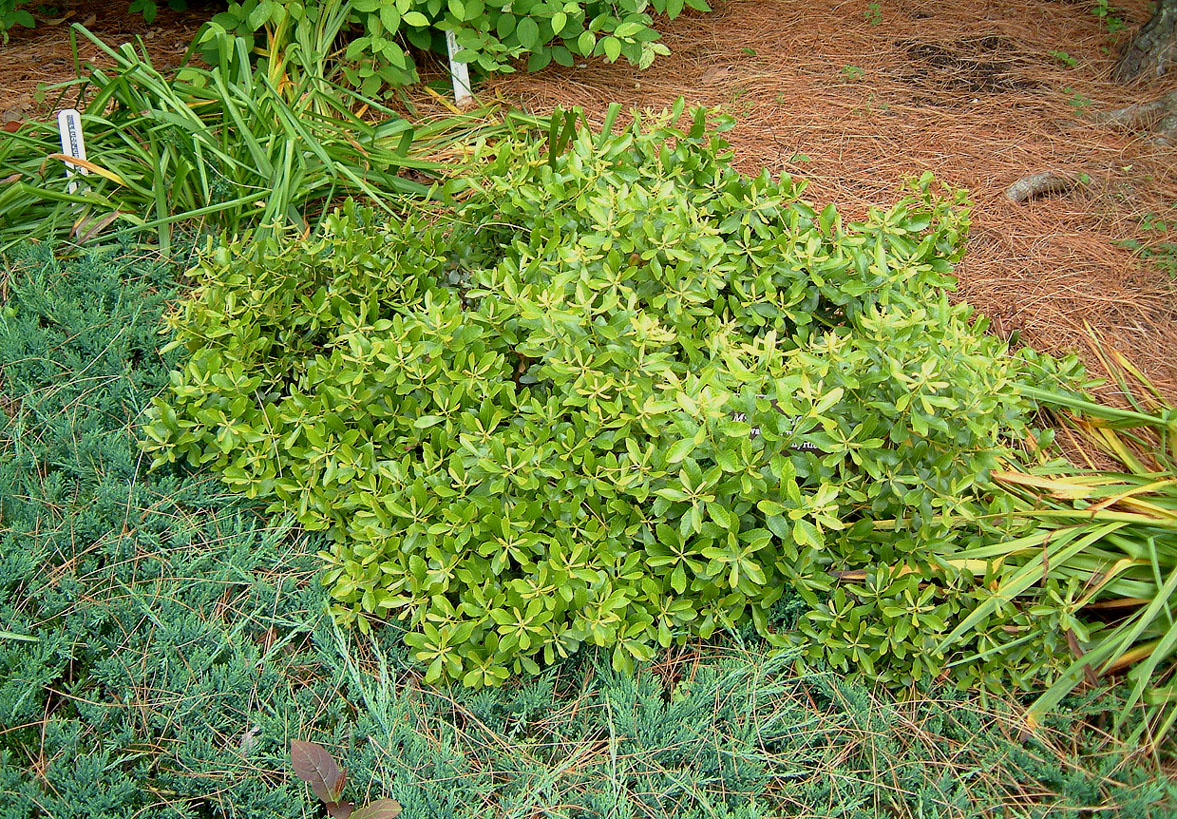 Myrica
cerifera var. pumila - click image to enlarge
Myrica
cerifera var. pumila - click image to enlargeJC Raulston Arboretum. Spring 2003. Note the short, wide, almost spoon-like leaves. The creeping juniper and daffodil foliage give one some idea of how small this plant can be.
|
NOS MYRICA PAGE |
| Copyright 2003-2004. New Ornamentals Society. All Rights Reserved. Lawful for online access only by current society members. All downloading, printing, saving to media, imaging, screen capture, or offline use is prohibited. Duplication by any means, method, or technology is unlawful. Do not link to this page. |
 Myrica
cerifera var. pumila - click image to enlarge
Myrica
cerifera var. pumila - click image to enlarge
JC Raulston Arboretum. Spring 2003. Note the short, wide, almost spoon-like
leaves. The creeping juniper and daffodil foliage give one some idea of how
small this plant can be.
Myrica
cerifera var. pumila
ht: 2-3' tall
ha: dwarf and spreading by suckers
ch: 8?
rai: better than species for a low hedge
so: Woodlander's 803-648-7522
Myrica
cerifera 'Club Med'
ha: dwarf, smaller than 'Fairfax', somewhat irregular
ht: 3-4 ft.
or: Bill Craven
ch: 7
Myrica
cerifera 'Don's Dwarf' ('Dodd's Dwarf')
ha: dwarf, compact, smaller than species typical
ht: 24" but reports of 4-6 ft. appear.
lc: dark olive green - better than most cv.
ll: larger than 'Lynn's Dwarf'
dr: leafspot resistant
ns: The name 'Dodd's Dwarf' has been listed because of its origin
or: Don Whiddon
in: Tom Dodd Nur.
so:
Rushing Nursery
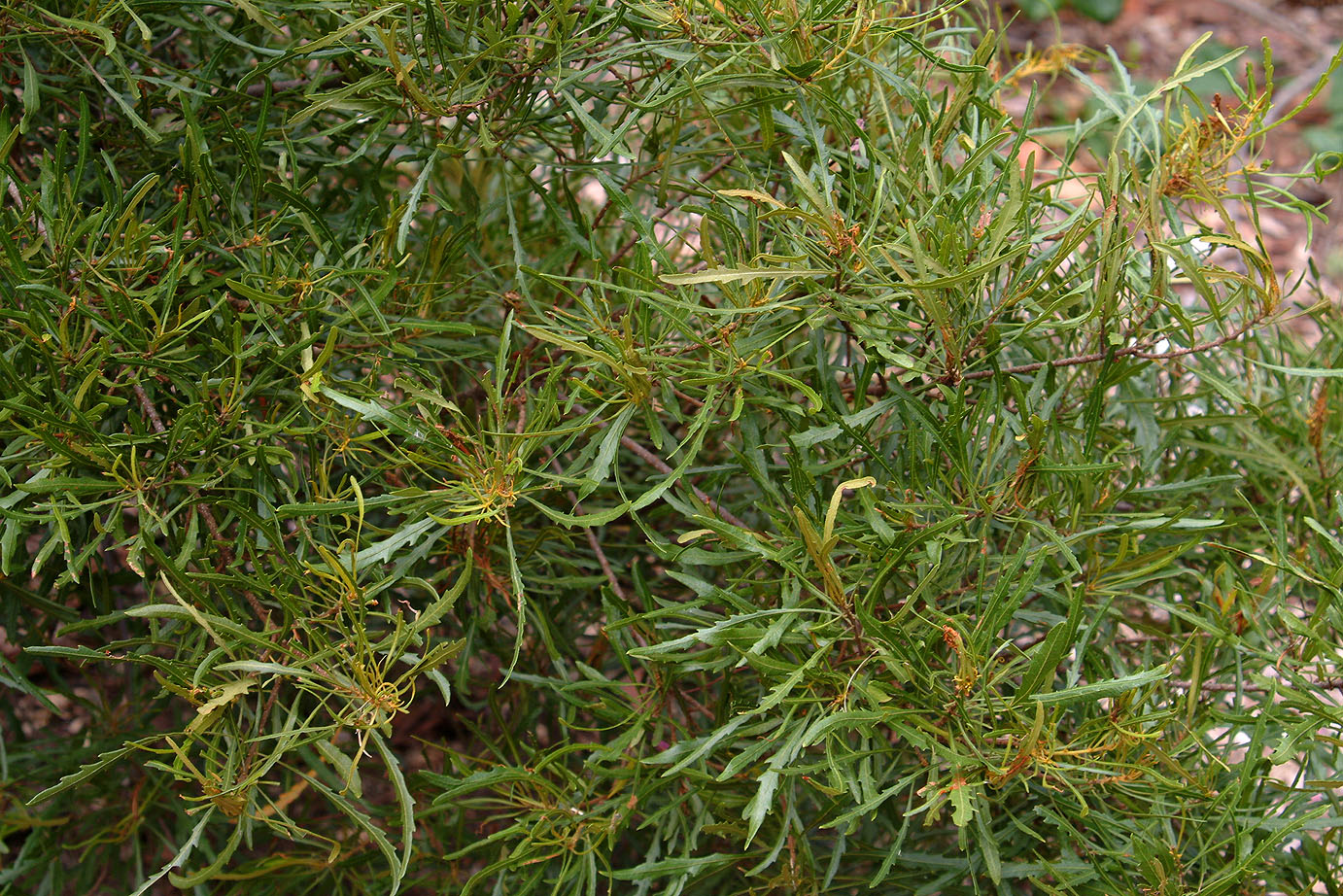 Myrica
cerifera 'Emperor - click image to enlarge
Myrica
cerifera 'Emperor - click image to enlarge
Hampton Roads Arboretum, Norfolk, VA USA. August 2003.
Myrica
cerifera 'Emperor'
ha: large, full-sized
ls: narrower blade
lm: dentate or serrate on most shoots, irregularly so. It is essentually a
cut-leaved cultivar.
lc: glossy rich green
eval: our first impression based on nursery plants (one to 4 feet tall) was that
it differed little. Likely that
eval: group of plants was stunted or had much leaf drop. The established plant
shot above was not only distinct
eval: but confirms this is an outstanding and wonderful introduction. It is a
little too Cannabinoid for some tastes
eval: perhaps. If you plant it don't be surprised if you return home some day
to find the local Sheriff chopping
eval: and hauling off your new hedge. Given the dense clustered buds of this
species - whew! Compared to other
eval: shrubs of this look, I like it much more than Rhamnus fragula 'Asplenifolia'
for a crisper, more toothed leaf.
or: Lane Bracken of AL
Myrica
cerifera 'Fairfax'
ha: compact, semi-dwarf, spreading well over time, denser
ht: 4-5 ft. in some gardens. Dirr reports GA plants reached 6-8
ft. in 8 years
lc: lighter green than species typical
lw: narrower than species typical
or: Bill Craven found near Fairfax SC
Myrica
cerifera 'Georgia Gem'
ha: compact, mound
ht: 12-18 in. tall x 30-36 in. wide
ll: smaller blades than typical
lc: yellow-green to dark olive green
or: Bill Craven of Waynesboro GA
lu: one of very few clones suitable for a tall ground cover
ch: Dirr reports it is less cold hardy than some clones and died
at 7 deg. F.
Myrica
cerifera 'Hiwassee'
ch: survived -4 deg. F.
or: Univ. of TN, Knoxville
Myrica
heterophylla 'Jamaica Road' (8/01)
ha: compact
lc: olive green
ch: 7
so:
Rushing Nursery online catalog
2001.
Myrica
cerifera 'King's Dwarf'
ha: compact
ll: smaller blades
or: Tom Dodd Nur.
Myrica
cerifera 'Lane'
lm: 'deeply serrate' and showier than species typical
dr: resistant to leaf spot
pat: US #7555 to R.L. Brackin in 1991
Myrica
cerifera 'Luray'
ha: dense, semi-dwarf
ht: 4 ft. to date
or: Woodlanders Nur. of Aiken SC
Myrica
cerifera 'Lynn's Dwarf'
ha: dense, compact, true dwarf
ht: 18-24 in.
ll: smaller blades
lc: bright green
or: Lynn Lowery
in: Tom Dodd Nur.
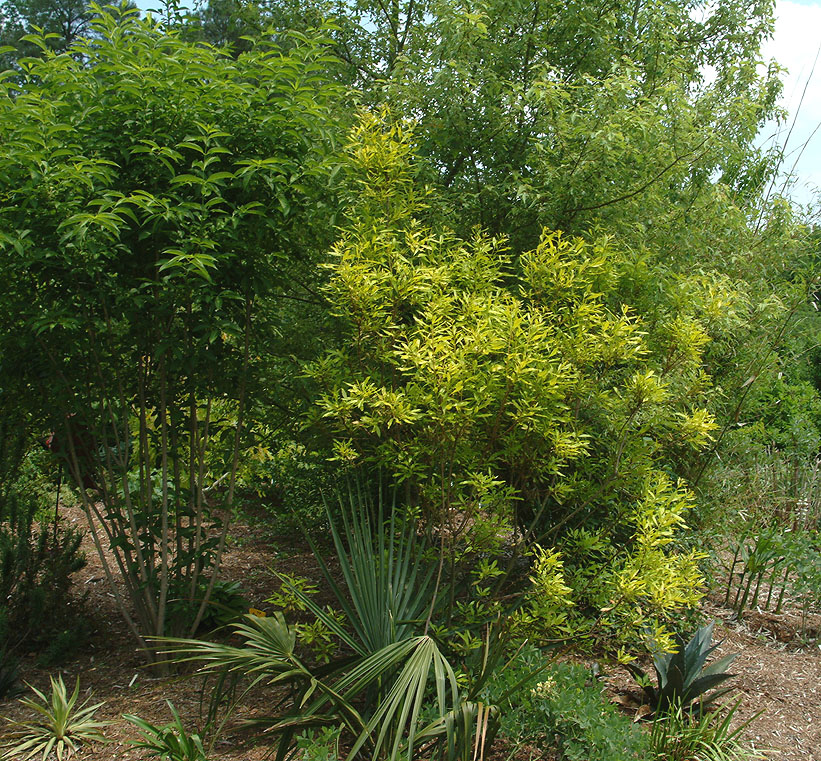
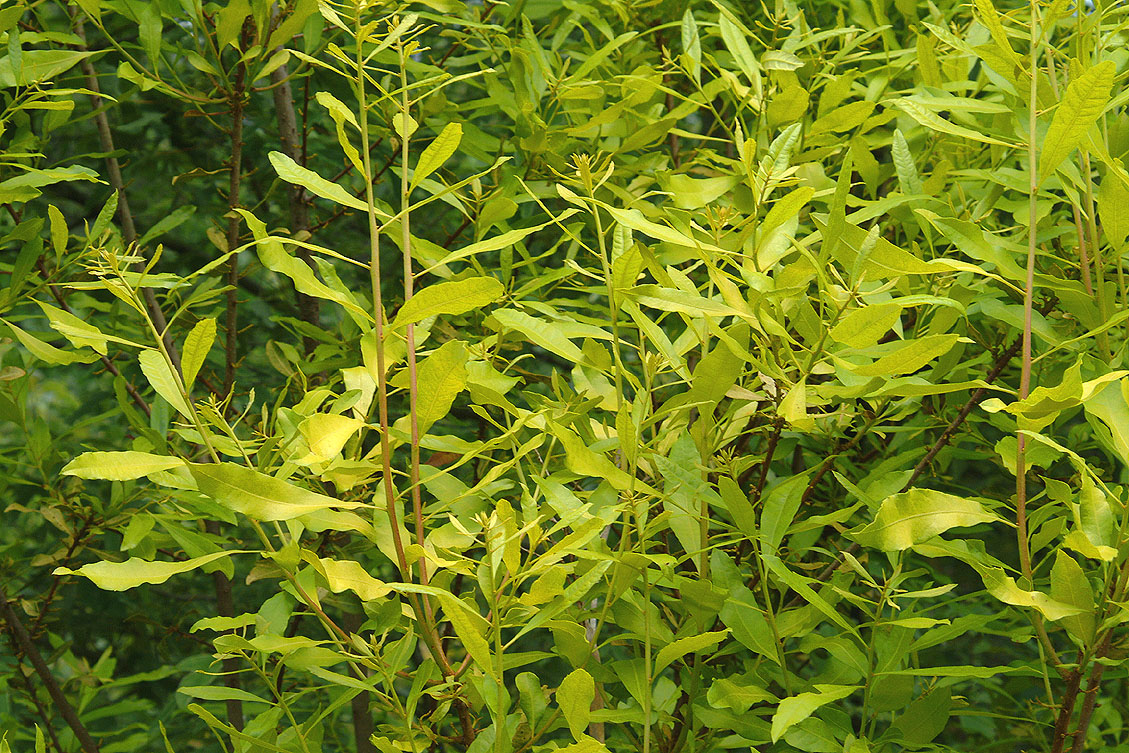 'Pat's
Gold' - click images
'Pat's
Gold' - click images
Plant Delights Nursery,
Raleigh, NC. May 2004. A new and interesting clone, valuable for contrasting
with darker shrubs. It's not bright but it's contrasty enough. The genus now has
several green hues, silvery-greens, and light gold.
Myrica cerifera 'Pat's
Gold' (5/4)
lc: greenish-yellow, very distinct on
contrast with greener forms
Myrica
cerifera var. pumila 'Suwanee Elf'
ht: 4 ft.
or: natural hybrid of var. pumila x var. cerifera
so:
Mail-Order
Natives
Myrica
cerifera var. pumila 'Willowleaf'
ha: dwarf as the variety
ls: narrower, Salix-like blade
or: Woodlanders c. 1998?
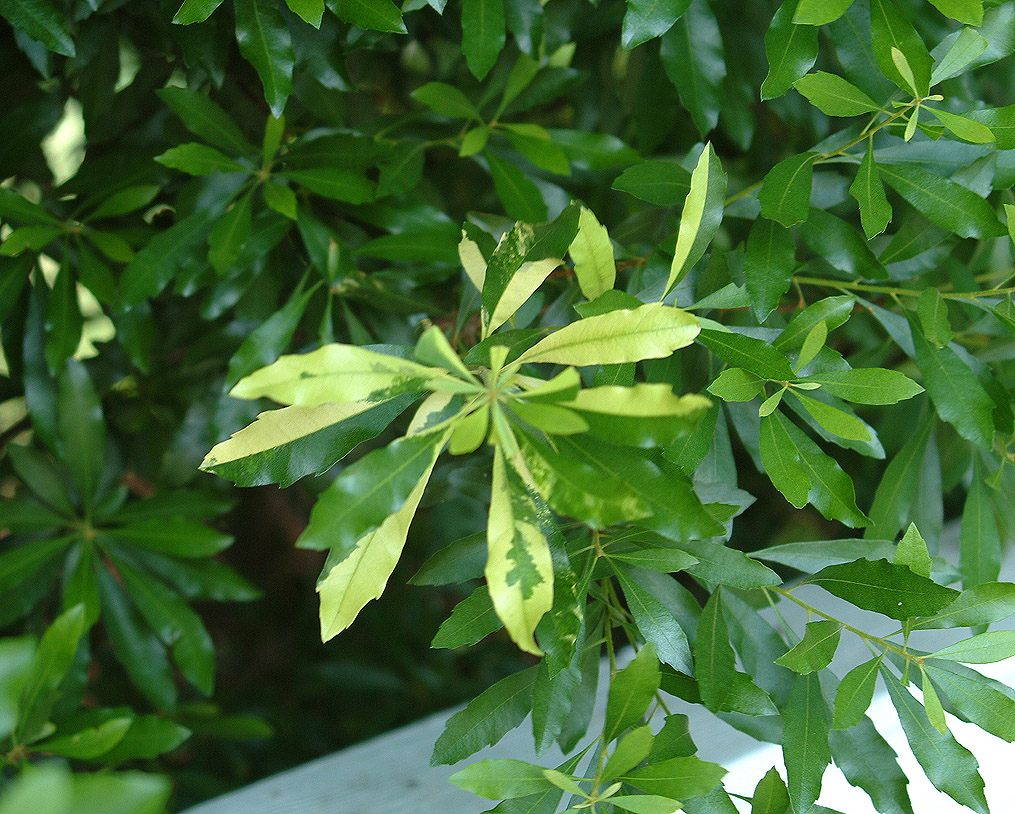 [variegated
sport from NC] - click image
[variegated
sport from NC] - click image
This new sport is currently under
evaluation. It is the most heavily covered chimera of several sports observed on
this species over two decades.
Myrica
cerifera [variegated sport from NC]
lc: heavily and irregularly mottled and sectored light yellow, most from
30-70% of surface, some leaves half green and half yellow
or: Laurence Hatch 2004 found as sport in Raleigh NC
Myrica
cerifera 'Varnadoe'
ha: dense
lc: darker green
or: Aaron Varnadoe
so:
Mail-Order
Natives
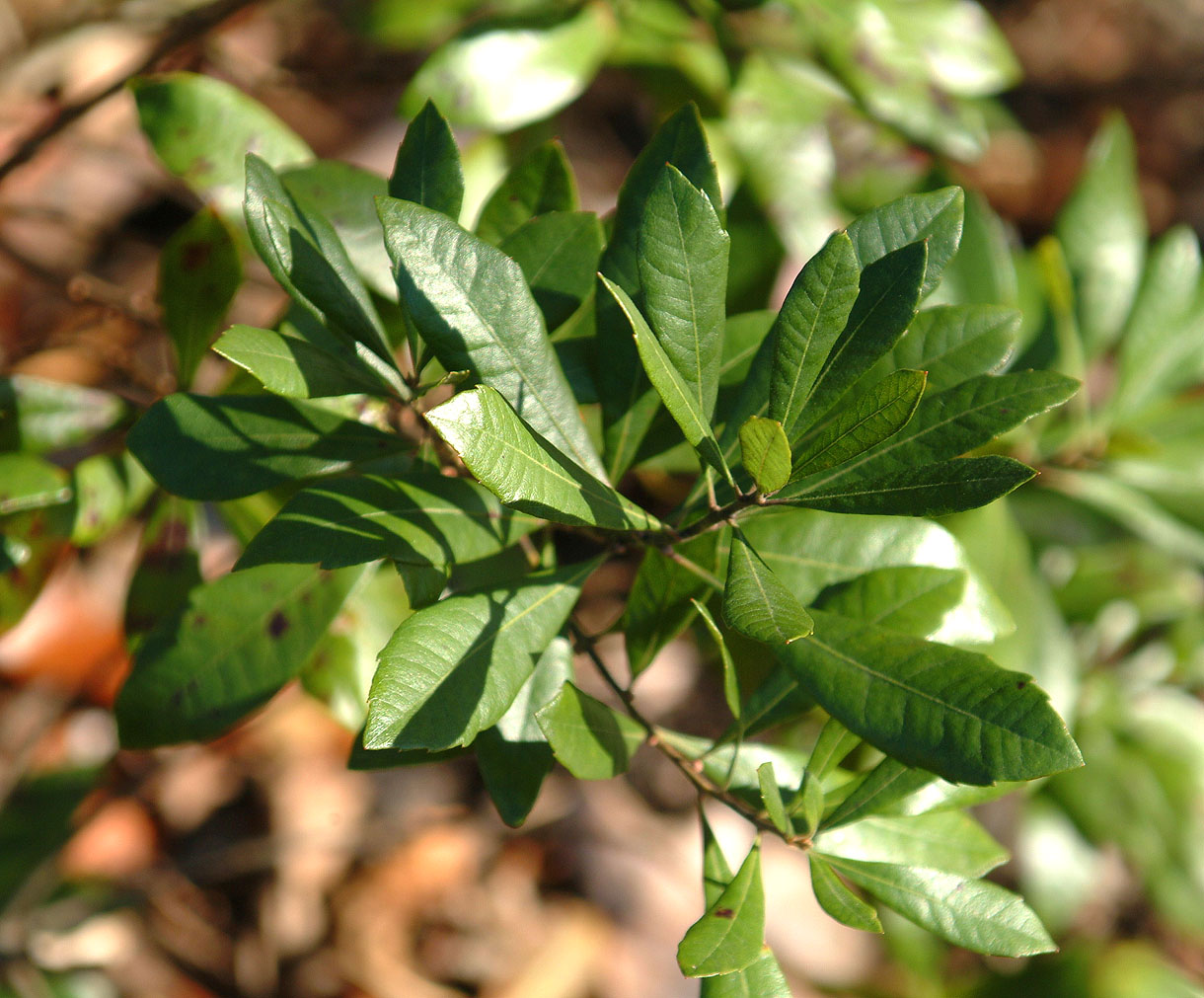 'Marcel's
Wonder' - click image to enlarge
'Marcel's
Wonder' - click image to enlarge
JC Raulston Arboretum. Fall 2003. Close-up of this newish, broad-leaved
clone. We did not some leafspot in this trial.
Myrica
heterophylla 'Marcel's Wonder' (8/01)
ns: listed name for
Rushing Nursery but not found
in the 2001 online catalog to date.
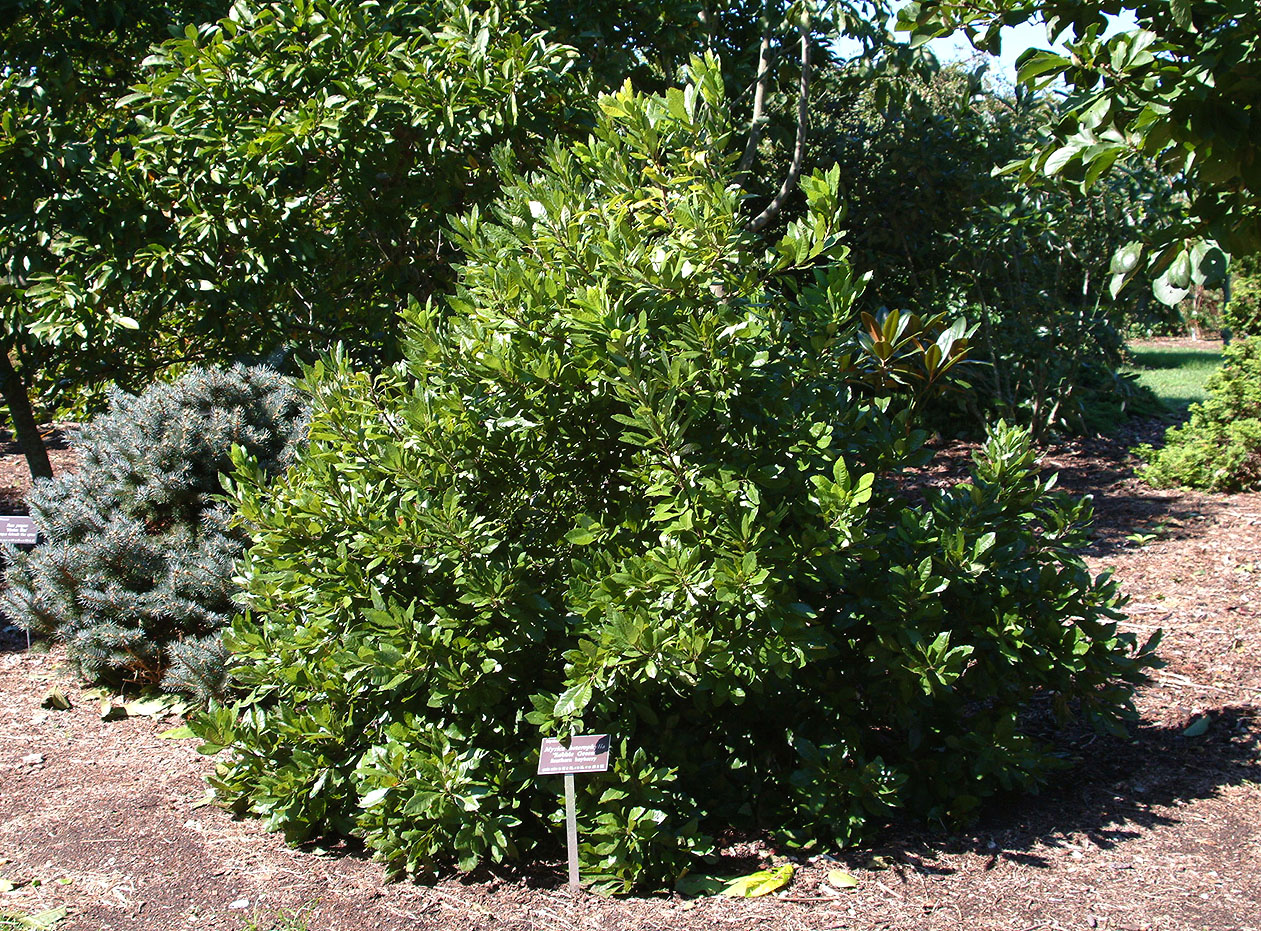 'Robbie
Green' - click image to enlarge
'Robbie
Green' - click image to enlarge
JC Raulston Arboretum. Fall 2003. This very wide-leaved cultivar with
neat, pyramidal shape immediately appeals.
Myrica
heterophylla 'Robbie Green' (8/01)
lc: red new growth becomes dark green
ch: 7
or: GA USA
so:
Rushing Nursery
Myrica
pensylvanica SILVER SPRITE™ 'Morton'
ht: 5 ft. tall x 7 ft. wide (original plant at 15 years)
ha: dense, compact, broadly oval
lc: grey-green
frq: as species typical
or: Kris Bachtell of Morton Arb., Lisle IL USA selected from
public landscape in that city
in, photo: Chicagoland Grows c. 2002
Myrica
pensylvanica 'Wildwood'
ha: vigorous and erect and multi-stemmed in dense thickets
ht: most to 6 ft. (dunes) - rarely to 8 ft. (inland moist soils)
lc: dark green
lu: salt and wind tolerant in sandy soils. Used for soil
stabilization
lu: and erosion control
or: USDA-SCS of Cape May NJ Plant Materials Center c. 1993.
Selected from
or: 86 collected strains over a period of 27 years in evaluation.
This
or: was breed from the top 4 of these 86 strains.
ch: 3
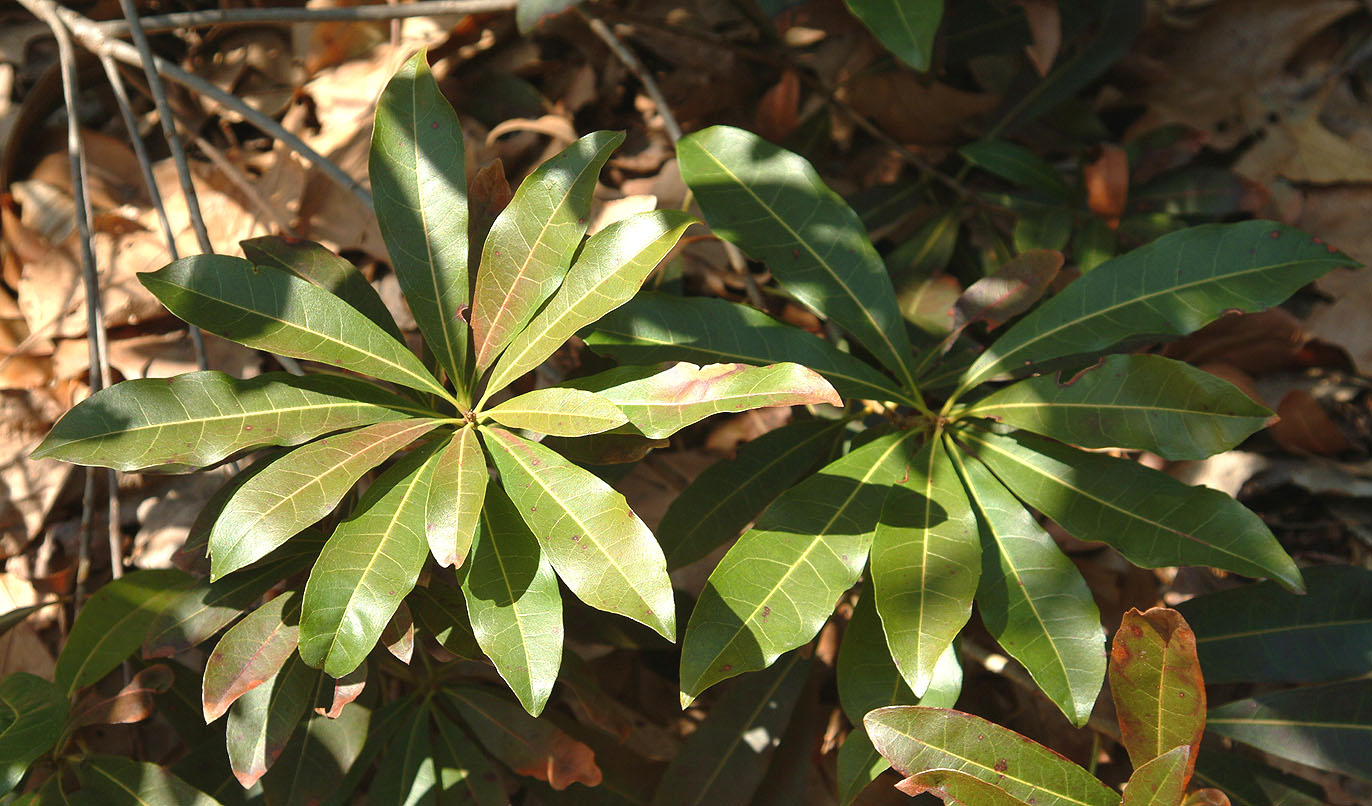 Myrica
rubra - click image
Myrica
rubra - click image
Asian Valley, US National
Arboretum. Spring 2004. A very different species with long leaves to 6 inches
and some curious red tints. This would be a nice
project for cultivar selection and breeding for warm (USDA 7-9) climates.
Myrica rubra